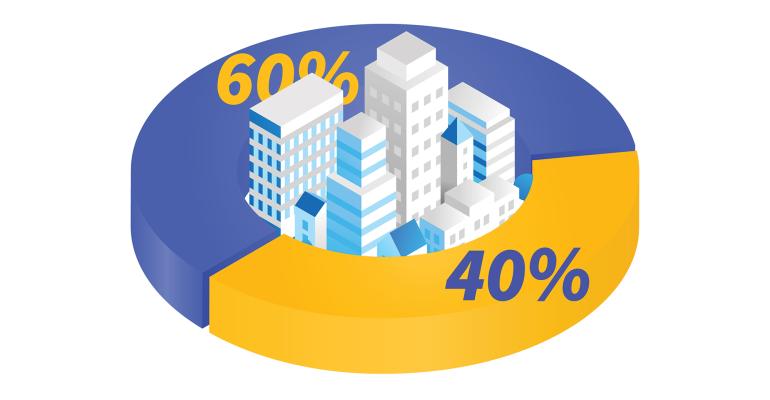For decades, many financial advisors have followed a formula for traditional client portfolio allocation which could broadly be described as 60 percent in equities and 40 percent in bonds, otherwise known as the 60-40 model. The rationale was that bonds represented a defensive bucket, while equities gave exposure to higher risk/return potential. Investors could take comfort from having some downside protection on a portion of their assets while benefiting from the upside if riskier assets performed.
However, as we now know, the performance of 60-40 portfolios last year left a lot to be desired. The Bloomberg Aggregate Bond Index, a key metric for bonds, lost roughly 13 percent for the year, the worst performance since it was established in 1976. The previous worst year had been 1994, when the index dropped 2.9 percent. Never before had that Index and the S&P 500 been down in the same year. The S&P 500 finished 2022 down 19.4 percent.
Why did this happen, and what does it mean for the 60-40 model going forward? Let’s start with the why. The origin of last year’s poor performance in public markets can be traced back to extraordinary action taken by the Fed (and other central banks around the world) in response to the 2008 Global Financial Crisis. In response to the crisis, the Fed tripled the size of its balance sheet almost overnight and took interest rates to zero. Financial Armageddon was avoided, but unprecedented liquidity flowed into the system, which saw many asset prices become inflated and ultimately disconnected from their fundamental value. Cheap and easily available capital encouraged speculation, and the market started overvaluing all assets. Then came a spike in inflation. When it became apparent that inflation was at risk of becoming permanent rather than transitory, the Fed took aggressive action, increasing rates and ending bond purchases in March 2022, with the Fed Funds rate now standing at 4.25-4.50 percent.
The combination of rising rates and liquidity being removed from the system saw the run-up in asset prices we experienced over the last decade start to unwind. In an environment where all asset prices had become inflated, when the music finally stopped, the selloff was indiscriminate and impacted both higher- and lower-risk assets. Hence the 60-40 model performed so poorly.
So, was 2022 the death knell for the classic allocation model?
I would argue that the concept behind the 60-40 model still holds water: Portfolios generally benefit from diversification, so combining core holdings of more defensive assets with riskier investments that help increase total portfolio returns makes sense. However, investors should shift their focus away from just investing in stocks, bonds, and other public-market instruments to allow for an increased allocation to private investments, particularly areas like real estate.
I am not alone in my opinion that private market investing can create a more robust risk-adjusted return for a portfolio than a traditional public-markets-only 60-40 model. Institutional and sophisticated investors, who can be more patient with their capital, have been increasing their allocations to private investments, particularly real estate and private equity, and their performance figures speak for themselves.
Let's look at university endowments. According to data from MPI, which provides research on institutional asset allocation, endowments saw just a 4 percent drop in returns in their 2022 fiscal years, much better than most benchmarks. The University of Pennsylvania, for instance, posted a flat 0 percent in financial year 2022, which showed that endowment managers were able to protect their fund at a time when public markets had one of their worst performances in recent memory. How did they do it? UPenn had a 2.67 percent return on private equity, with boosts from natural resources and real estate, which offset losses from hedge funds (-2.84 percent) and U.S. equity (-1.95 percent). It was a similar story for Yale, which managed a 0.8 percent return for financial year 2022—again, driven by private market assets.
Of course, private market assets and real estate are marked to market periodically, and the endowments may see losses on some individual assets when they do. That is the nature of investing. Yet, areas like real estate and other private markets can generally weather difficult market conditions better than their more liquid counterparts and over the long run have historically provided higher returns and lower volatility.
So institutional investors are following their own version of the 60-40 model. They are just doing it by increasing their allocation to private assets, such are private equity, real estate, private credit and venture capital. And I believe it is time for financial advisors and investors to consider doing the same thing—a more institutional approach to asset allocating, which means getting comfortable with higher allocations to private market assets.
I know firsthand how passionate financial advisors are about their fiduciary duty. That is why they have historically shied away from recommending alternative investments—they were not well understood and perceived as too high risk for the average investor. However, given the environment we find ourselves in, it is vitally important that advisors start having these conversations with their clients now. Individual investors need to better understand both the risks and the benefits of increasing their exposure to private assets.
Every investor’s needs will differ. But if we want to keep talking about the 60-40 model, we need to start talking about how clients can benefit from incorporating private assets as an integral part of that allocation process.
Andrew Mescon serves as CEO of Ballast Rock Private Wealth, a full-service registered investment advisor.

